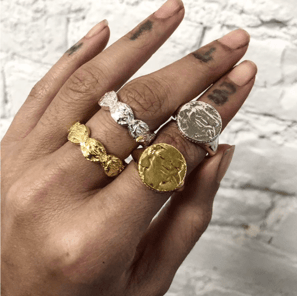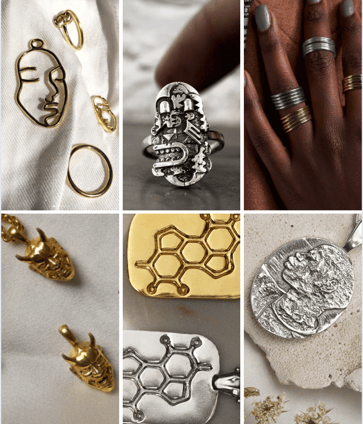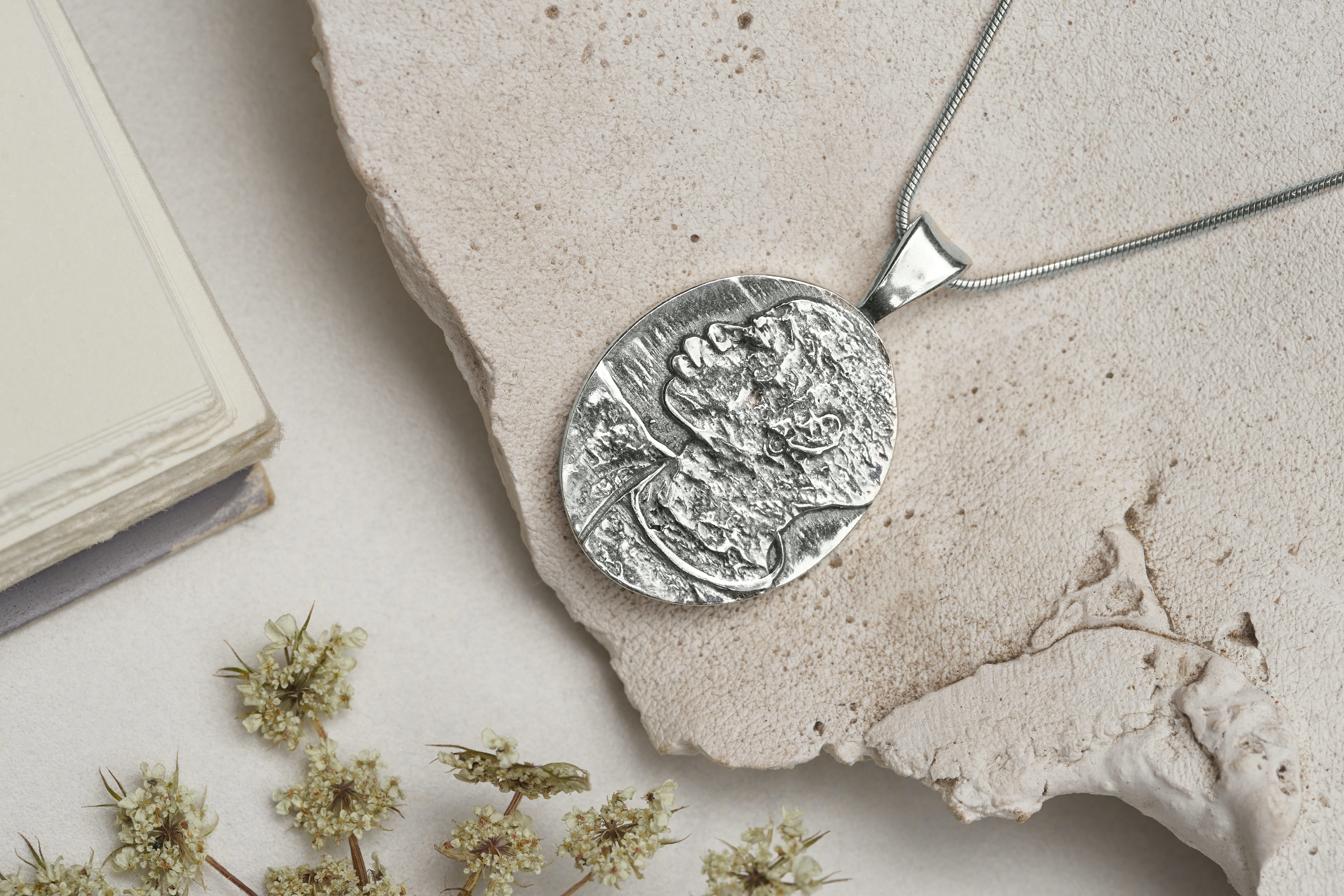Choosing the Right Material for Your Jewelry Brand: A Creator's Guide
Starting a jewelry brand can be thrilling, yet the myriad of decisions to make can feel overwhelming. One of the most crucial decisions is the choice of material. Your choice not only defines the aesthetics but also the wearability, longevity, and perceived value of your jewelry. Let's dive into a detailed overview of the top materials, helping you select the best fit for your brand vision and target audience.

Sterling Silver
Pros:
- Luxurious Look: Sterling silver exudes elegance, catching the eye with its luminous shine.
- Durability: Being an alloy of silver and other metals (typically copper), it's more resilient than pure silver.
- Tarnish-resistant: When properly cared for, sterling silver resists tarnishing better than pure silver.
- Oxidation: Over time, if not properly cared for, it can oxidize, losing its shine.
- Price: It's pricier than some alternatives, which can influence the final product price.
- Ideal For: Brands targeting a mid-range to high-end market, where customers seek quality and are willing to invest in longevity.
Vermeil
Pros:
- Luxe Feel at a Fraction: Essentially gold-plated sterling silver, vermeil offers the luxe feel of gold without the heavy price tag.
- Durability: Inherits the durability of sterling silver.
Cons:
Price: It can be pricier than brass or plated brass options.
Ideal For: Brands that want to offer gold aesthetics without the high cost of solid gold.

Brass and Plated Brass
Pros:
- Affordability: Brass is relatively inexpensive, making it great for budget-friendly brands.
- Malleability: Easy to work with, allowing for intricate designs.
Cons:
- Discoloration: Brass can cause skin discoloration, turning fingers green due to its copper content.
- Tarnishing: It's more susceptible to tarnishing compared to other materials.
- Ideal For: Budget-friendly brands or experimental collections where you want to test intricate designs without significant upfront costs.
Stainless Steel
Pros:
Durable: Stainless steel is known for its strength, resisting scratches and dents.
Non-tarnishing: It's rust and tarnish-resistant.
Cons:
Heavier: Stainless steel has more weight, which might not be suitable for all designs.
Ideal For: Brands aiming for a modern, industrial feel or those seeking durability and longevity at a reasonable price
Exciting news for creators!
Gildform is introducing stainless steel using Direct Metal 3D printing, and select creators can sign up to produce in this material even before its broad availability! Please keep in mind that this offer is available on a limited basis and spaces are limited.
Eligibility Requirements for Creators to Produce with Stainless Steel
-
Membership Tier: The creator must be enrolled as a Gildform Gold Plus member. Those not currently at this membership tier must be prepared to upgrade upon acceptance.
-
Design Submission: A design crafted using the Gildform Design Marketplace must be submitted for consideration.
-
Feedback Commitment: Once an order is received, the creator is obligated to provide immediate feedback. This feedback process will involve both a video Zoom call and a structured form.
-
Sampling Budget: Creators must have a reserved budget of at least $150 dedicated specifically for sampling purposes.

Understanding Wearability & Longevity: The wearability and longevity of your chosen material affect your brand's reputation. For instance, while brass is cost-effective, it might not be ideal for everyday wear due to potential tarnishing or skin reactions. On the flip side, sterling silver and stainless steel, with proper care, can last for years, enhancing brand trust.
Perceived Value: Your material choice communicates a lot about your brand. Sterling silver and vermeil appeal to an audience that values sophistication. In contrast, stainless steel can target a modern, edgy crowd. Understand your target audience's preferences, as this greatly affects their perception and the price they're willing to pay.
Common Questions:
Why is my jewelry tarnishing? Oxidation can cause tarnishing. Sterling silver, over time, may exhibit this, but with regular polishing, this can be prevented.
Why is my finger turning green? This is often due to a reaction between one's skin and the metal, commonly seen with brass.
Caring for Your Jewelry:
Sterling Silver & Vermeil: Gently clean with a soft cloth. Store in a dry place. Avoid prolonged exposure to water. Avoid using a polishing cloth on your vermeil jewelry as most cloths are embedded with abrasives that will remove the gold layers from the piece.
Brass: To delay tarnishing, store in a cool, dry place. Regular polishing can help maintain its shine.
Stainless Steel: Resistant to rust and tarnishing, it's low maintenance. However, occasional cleaning with a soft cloth can keep it looking new.
In conclusion, each material has its unique attributes. Understanding these, along with the preferences of your target audience, will guide you in crafting jewelry that resonates, lasts, and delights. Whatever your choice, let it reflect the heart and soul of your brand, and you'll undoubtedly shine in the world of jewelry-making.


